3 Delicious Fall Salad Recipes for Healthy Autumn Meals
What if the secret to maintaining your health goals during autumn lies not in avoiding seasonal comfort foods, but in embracing the vibrant harvest flavors in creative new ways? While many people assume that fall means heavy, calorie-laden dishes, the truth is that autumn’s bounty offers some of the most nutritious and flavorful ingredients perfect for creating satisfying fall salad combinations that nourish both body and soul.
The crisp air and changing leaves signal nature’s transition into a season rich with nutrient-dense vegetables, fruits, and grains that can transform your typical greens into extraordinary culinary experiences. From caramelized butternut squash to tart cranberries and crunchy apples, fall ingredients bring complexity and warmth to salads that summer produce simply cannot match. These three carefully crafted recipes will revolutionize your approach to autumn eating, proving that healthy choices can be both indulgent and seasonally appropriate.
Table of Contents
Recipe 1: Roasted Butternut Squash and Apple Fall Salad
This vibrant leafy green salad recipe combines the natural sweetness of roasted butternut squash with crisp apples and tangy goat cheese, creating a perfect harmony of autumn flavors. The medley of textures from crunchy walnuts, chewy cranberries, and tender roasted vegetables makes this dish a celebration of fall’s abundant harvest.
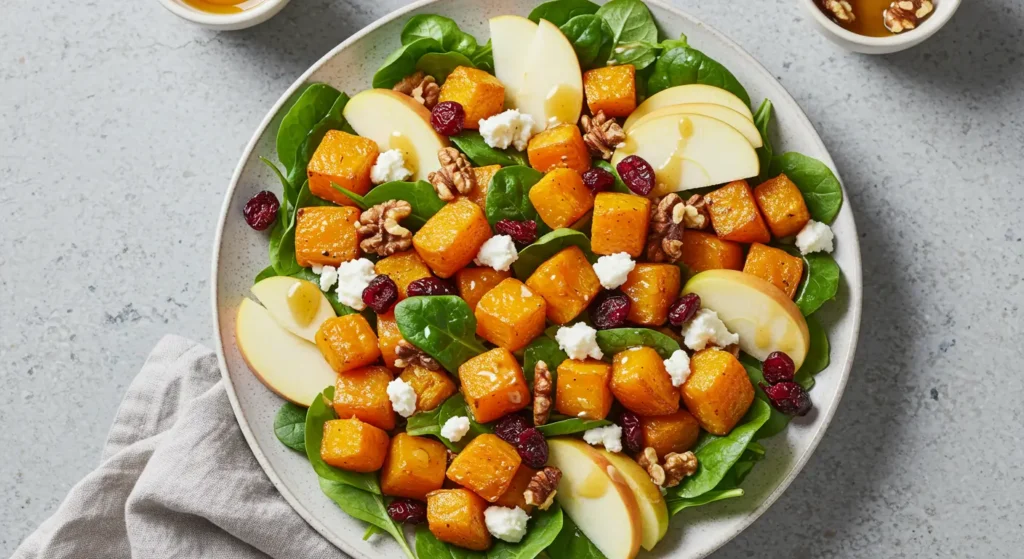
Ingredients List
For this vibrant fall salad you’ll need a collection of seasonal ingredients that create the perfect balance of sweet, savory, and textural elements. The combination of roasted vegetables with fresh greens creates a satisfying meal that captures autumn’s essence in every bite.
- 2 cups butternut squash, cubed and roasted
- 4 cups mixed greens (arugula, spinach, and kale)
- 1 large Honeycrisp apple, thinly sliced
- 1/2 cup dried cranberries
- 1/3 cup toasted walnuts, roughly chopped
- 1/4 cup goat cheese, crumbled
- 2 tablespoons pumpkin seeds
- 3 tablespoons olive oil
- 2 tablespoons apple cider vinegar
- 1 tablespoon maple syrup
- 1 teaspoon Dijon mustard
- Salt and pepper to taste
Timing
This fall salad requires careful timing to ensure all components are perfectly prepared and temperatures are balanced for optimal enjoyment.
- Preparation time: 20 minutes
- Roasting time: 25 minutes
- Assembly time: 10 minutes
- Total time: 55 minutes
Step-by-Step Instructions
Step 1: Prepare the Butternut Squash
Preheat your oven to 425°F and line a baking sheet with parchment paper. Toss the cubed butternut squash with 1 tablespoon of olive oil, salt, and pepper. Roast for 20-25 minutes until tender and lightly caramelized, with edges turning golden brown. The natural sugars will concentrate, creating a sweet, nutty flavor that forms the heart of this autumn creation.
Step 2: Toast the Walnuts and Pumpkin Seeds
While the squash roasts, heat a dry skillet over medium heat. Add walnuts and pumpkin seeds, stirring frequently for 3-4 minutes until fragrant and lightly golden. This step intensifies their flavor and adds essential crunch that contrasts beautifully with the creamy squash.
Step 3: Prepare the Dressing
Whisk together the remaining olive oil, apple cider vinegar, maple syrup, and Dijon mustard in a small bowl. Season with salt and pepper, adjusting sweetness and acidity to your preference. The maple syrup echoes the squash’s natural sweetness while the vinegar provides necessary brightness.
Step 4: Assemble the Salad
Arrange mixed greens on serving plates, then top with warm roasted squash, apple slices, cranberries, toasted nuts, and crumbled goat cheese. Drizzle with dressing just before serving to maintain the greens’ crispness and prevent wilting.
Nutritional Information
For a serving of this fall salad, you’ll receive a powerhouse of nutrients that support your wellness goals while satisfying your taste buds with seasonal flavors.
- Calories: 285 per serving
- Protein: 8 grams
- Fiber: 6 grams
- Healthy fats: 18 grams
- Vitamin A: 184% daily value
- Vitamin C: 35% daily value
- Iron: 15% daily value
- Magnesium: 12% daily value
Common Mistakes to Avoid
Master this fall salad by avoiding these pitfalls that can compromise the dish’s flavor, texture, and visual appeal.
- Overdressing the greens leads to wilted, soggy leaves that lack the crisp texture essential to a great salad
- Adding warm squash to delicate greens too quickly can cause premature wilting and temperature imbalance
- Cutting apples too early results in browning that diminishes both appearance and flavor freshness
- Skipping the nut toasting step misses an opportunity to develop deeper, more complex flavors
- Using pre-crumbled cheese often lacks the creamy texture and fresh taste of freshly crumbled varieties
Recipe 2: Warm Brussels Sprouts and Bacon Fall Salad
This hearty leafy green salad recipe combines the robust flavors of Brussels sprouts with smoky bacon, creating a warming autumn dish that satisfies both comfort food cravings and nutritional needs.
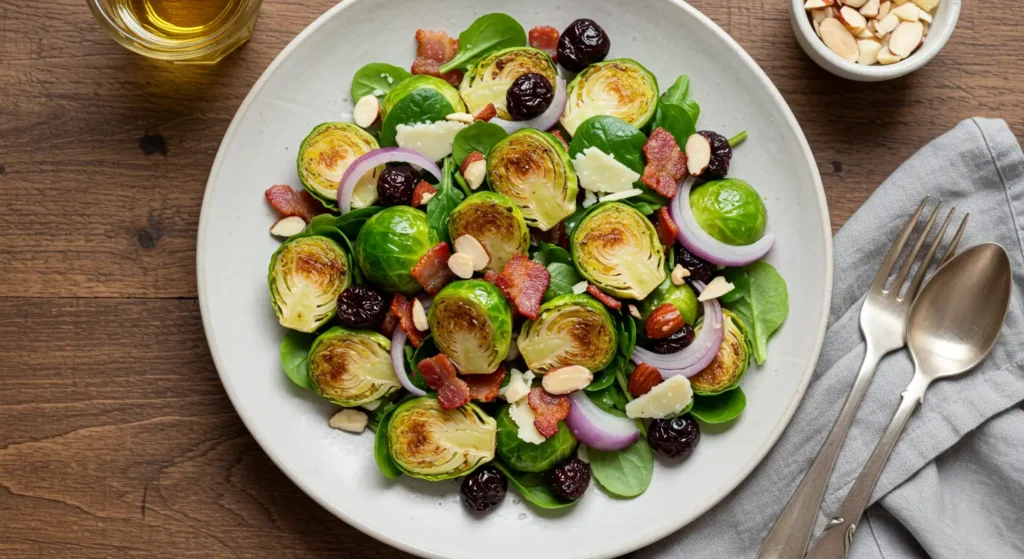
Ingredients List
For this warming fall salad you’ll need ingredients that balance the slight bitterness of Brussels sprouts with rich, savory elements that create a harmonious and satisfying meal.
- 1 pound Brussels sprouts, halved
- 4 strips bacon, chopped
- 4 cups mixed baby greens
- 1/2 red onion, thinly sliced
- 1/3 cup dried cherries
- 1/4 cup toasted almonds, sliced
- 2 ounces aged cheddar, shaved
- 3 tablespoons balsamic vinegar
- 2 tablespoons olive oil
- 1 tablespoon honey
- 1 teaspoon whole grain mustard
- Salt and freshly ground black pepper
Timing
This fall salad requires strategic timing to serve the Brussels sprouts at the perfect temperature while maintaining fresh greens.
- Preparation time: 15 minutes
- Cooking time: 12 minutes
- Assembly time: 8 minutes
- Total time: 35 minutes
Step-by-Step Instructions
Step 1: Cook the Bacon
Heat a large skillet over medium heat and cook chopped bacon until crispy, about 6-8 minutes. Remove bacon with a slotted spoon, leaving 2 tablespoons of rendered fat in the pan for cooking the Brussels sprouts.
Step 2: Sauté Brussels Sprouts
Add halved Brussels sprouts to the same skillet and cook for 8-10 minutes, stirring occasionally, until they’re golden brown and slightly caramelized. The natural sugars will develop, creating depth and reducing any bitterness.
Step 3: Prepare the Warm Dressing
In the same skillet, add balsamic vinegar, honey, and mustard, stirring to combine with the pan drippings. Cook for 1-2 minutes until slightly thickened, then remove from heat and whisk in olive oil.
Step 4: Final Assembly
Toss warm Brussels sprouts with mixed greens, allowing the heat to slightly wilt the more delicate leaves. Top with red onion, dried cherries, almonds, cheese, and crispy bacon, then drizzle with the warm dressing.
Nutritional Information
For a serving of this fall salad, you’ll enjoy a balanced combination of protein, healthy fats, and essential vitamins that support heart health and sustained energy.
- Calories: 365 per serving
- Protein: 14 grams
- Fiber: 8 grams
- Healthy fats: 22 grams
- Vitamin K: 150% daily value
- Vitamin C: 85% daily value
- Folate: 25% daily value
- Calcium: 18% daily value
Common Mistakes to Avoid
Master this fall salad by avoiding these pitfalls that can compromise the Brussels sprouts’ texture and the overall harmony of flavors.
- Overcrowding Brussels sprouts in the pan prevents proper caramelization and results in steamed rather than golden vegetables
- Cooking bacon until burnt creates bitter flavors that overpower the delicate sweetness of the other ingredients
- Adding delicate greens too early causes excessive wilting and destroys the textural contrast essential to the dish
- Making dressing too hot can cook the greens instantly and create an unappetizing, mushy texture
- Skipping the resting period for Brussels sprouts prevents proper caramelization and flavor development
Recipe 3: Harvest Grain Bowl Fall Salad
This nutrient-dense creation showcases autumn’s diverse harvest in a satisfying grain bowl format that provides sustained energy and complete nutrition.
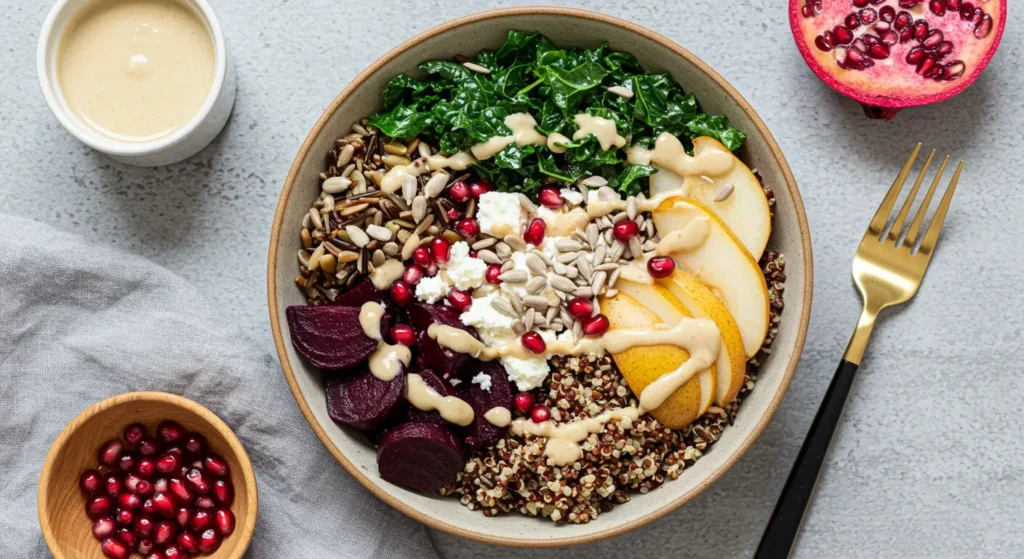
Ingredients List
For this hearty fall salad you’ll need a variety of textures and flavors that create a complete meal celebrating the season’s agricultural abundance.
- 1 cup cooked wild rice
- 1 cup cooked quinoa
- 3 cups massaged kale leaves
- 1 large pear, diced
- 1/2 cup roasted beets, cubed
- 1/3 cup pomegranate seeds
- 1/4 cup sunflower seeds
- 2 ounces feta cheese, crumbled
- 1/4 cup tahini
- 2 tablespoons lemon juice
- 1 tablespoon apple cider vinegar
- 1 clove garlic, minced
- 2 teaspoons honey
- Water to thin
- Salt and pepper to taste
Timing
This hearty fall salad balances earthy grains, roasted vegetables, and fresh fruit, requiring thoughtful preparation so each element keeps its best texture and flavor when combined.
- Preparation time: 20 minutes
- Cooking time: 25 minutes
- Assembly time: 10 minutes
- Total time: 55 minutes
Step-by-Step Instructions
Step 1: Prepare the Grains
Cook wild rice and quinoa according to package directions, allowing them to cool to room temperature. The combination provides complete amino acids and varied textures that make this salad incredibly satisfying.
Step 2: Massage the Kale
Remove tough stems from kale and massage leaves with a pinch of salt and a drizzle of olive oil for 2-3 minutes until they soften and darken. This technique breaks down the fibrous structure, making kale more digestible and pleasant to eat.
Step 3: Create Tahini Dressing
Whisk tahini with lemon juice, apple cider vinegar, minced garlic, and honey. Gradually add water until you achieve a creamy, pourable consistency. This protein-rich dressing adds Middle Eastern flair while providing healthy fats.
Step 4: Build the Bowl
Layer massaged kale with cooled grains, then arrange pear, beets, pomegranate seeds, and sunflower seeds in sections. Top with feta cheese and drizzle generously with tahini dressing for a restaurant-quality presentation.
Nutritional Information
For a serving of this fall salad, you’ll experience a nutrient-dense meal that provides sustained energy and supports overall wellness goals.
- Calories: 425 per serving
- Protein: 16 grams
- Fiber: 12 grams
- Healthy fats: 15 grams
- Iron: 25% daily value
- Folate: 30% daily value
- Vitamin K: 180% daily value
- Antioxidants: High levels from pomegranate and beets
Common Mistakes to Avoid
Master this fall salad by avoiding these pitfalls that can diminish the dish’s flavor and nutritional benefits.
- Overcooking grains results in mushy textures that don’t provide the satisfying chewiness essential to grain bowls
- Using tough, unmassaged kale creates an unpleasant eating experience with overly fibrous, bitter leaves
- Making dressing too thick prevents proper coating and distribution throughout the salad components
- Adding dressing too early can make ingredients soggy and compromise the fresh textures
- Skipping the grain cooling step can wilt delicate ingredients and create temperature conflicts
Conclusion
These three fall salad recipes demonstrate that healthy autumn eating doesn’t require sacrificing flavor or satisfaction. Each recipe celebrates seasonal ingredients while providing complete nutrition, proving that salads can be just as comforting as traditional fall comfort foods. The combination of roasted vegetables, fresh fruits, nuts, and grains creates meals that nourish your body while delighting your taste buds with the rich, complex flavors that make autumn such a special season.
Try these recipes and share your feedback in the review section or leave a comment on our blog. Your experiences and modifications help our community discover new ways to enjoy healthy, seasonal eating throughout the beautiful autumn months.
FAQs
What’s the best way to substitute ingredients if I have dietary restrictions? Each recipe offers flexibility – use nutritional yeast for dairy-free options, maple syrup instead of honey for vegan needs, and gluten-free grains like quinoa for those avoiding gluten.
Can I use frozen vegetables instead of fresh ones in these recipes? While fresh vegetables provide better texture and flavor, you can use frozen butternut squash and Brussels sprouts – just ensure they’re thoroughly thawed and patted dry before cooking.
What other seasonal vegetables work well in fall salads? Sweet potatoes, delicata squash, roasted carrots, and caramelized onions all make excellent additions that maintain the autumn theme while adding variety to your seasonal meal rotation.
How long do these dressed salads stay fresh in the refrigerator? Undressed components stay fresh for 3-5 days, but once dressed, consume within 24 hours for best quality, as the acidity in dressings can break down delicate greens over time.
Are these salads suitable for people following specific diets like keto or paleo? The recipes can be modified for various dietary approaches – reduce grains and fruits for keto, eliminate dairy for paleo, or increase nuts and seeds for additional healthy fats to meet your specific nutritional goals.
Your Feedback Matters
There are no reviews yet. Be the first one to write one.

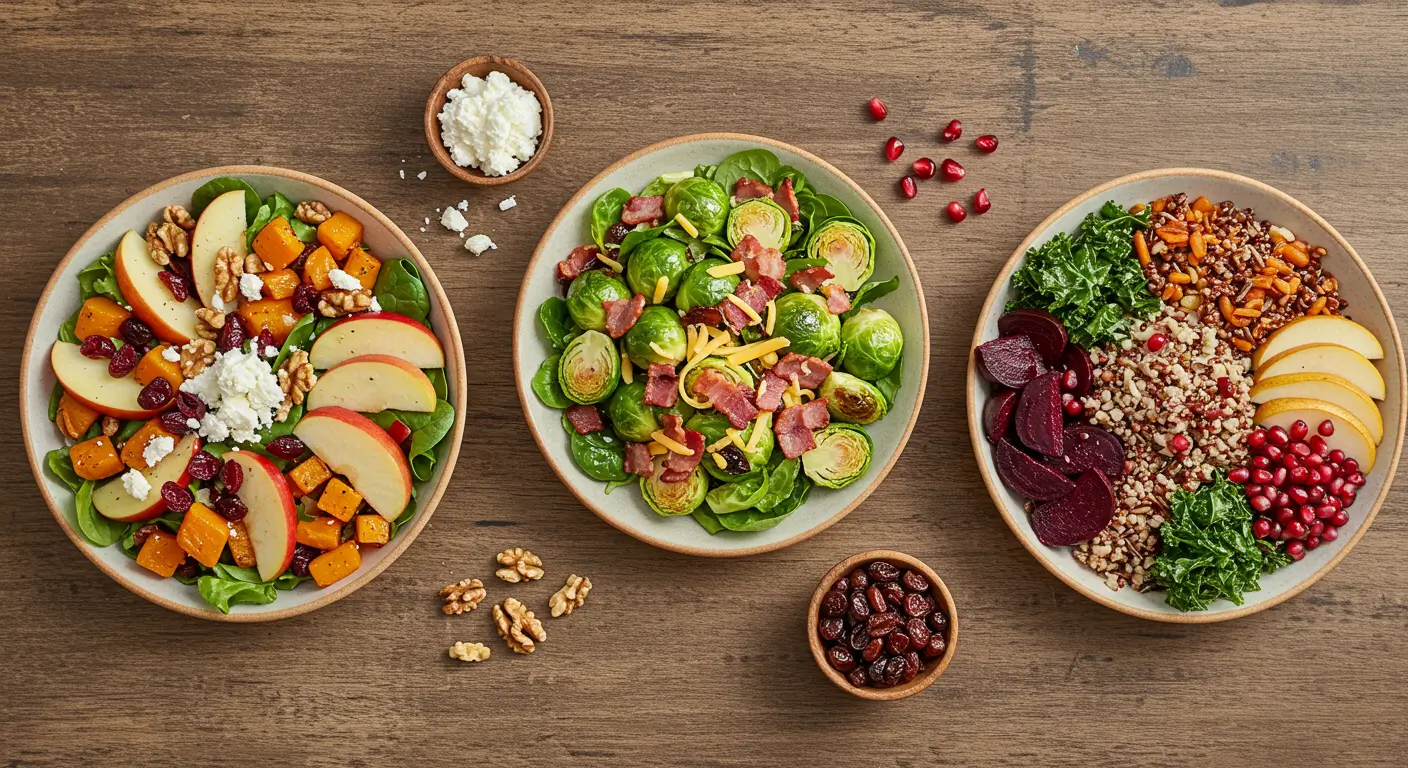
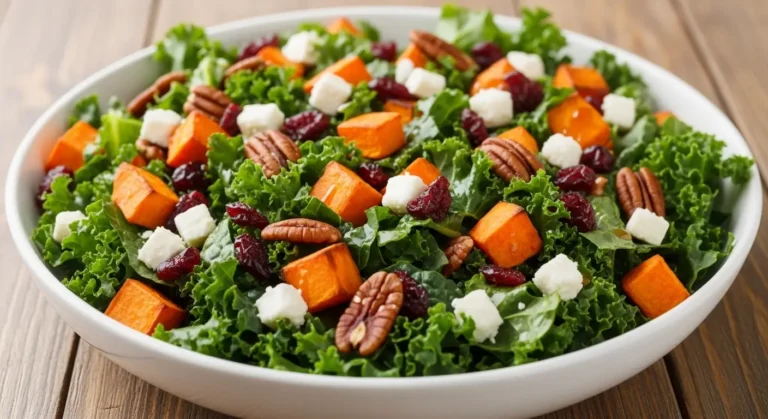
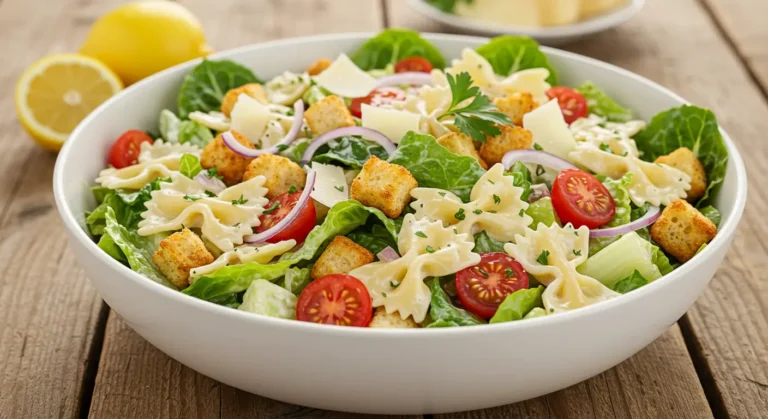
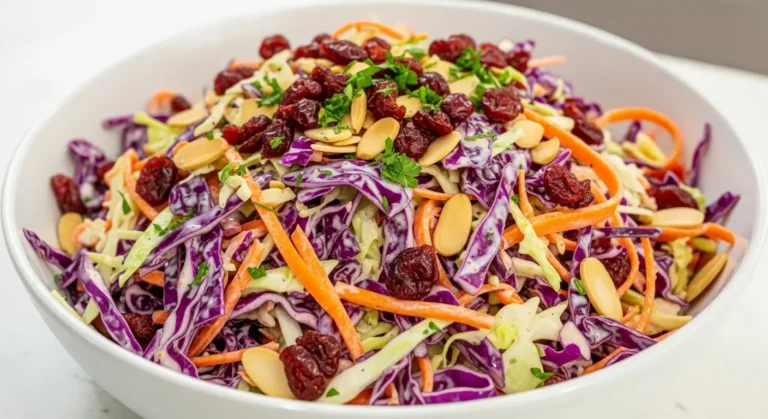
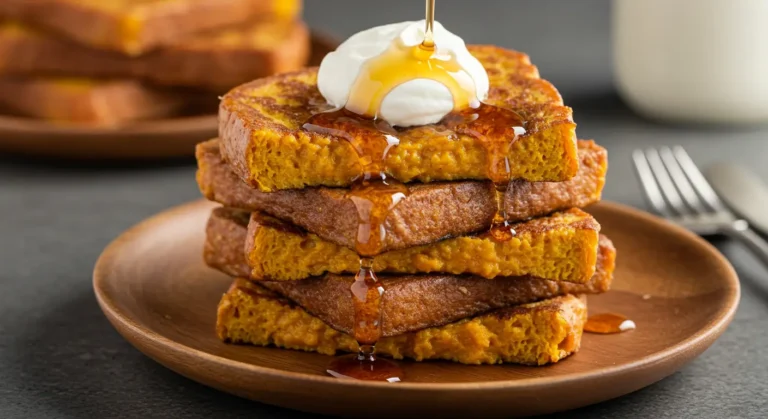

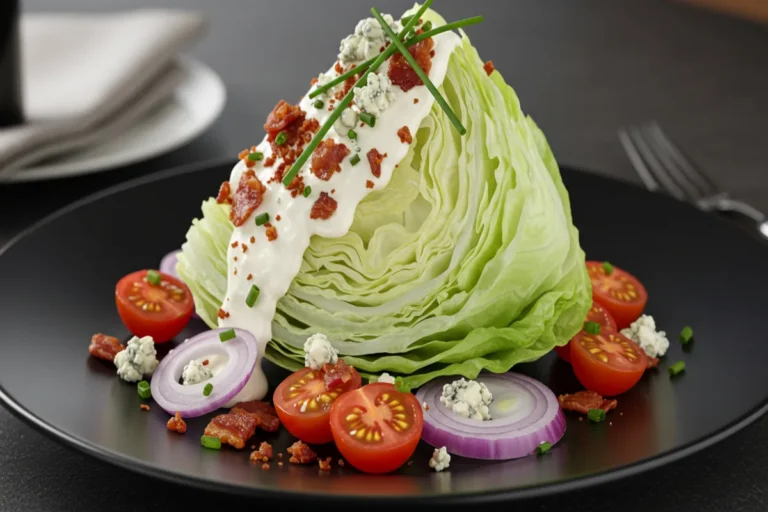
One Comment
Comments are closed.